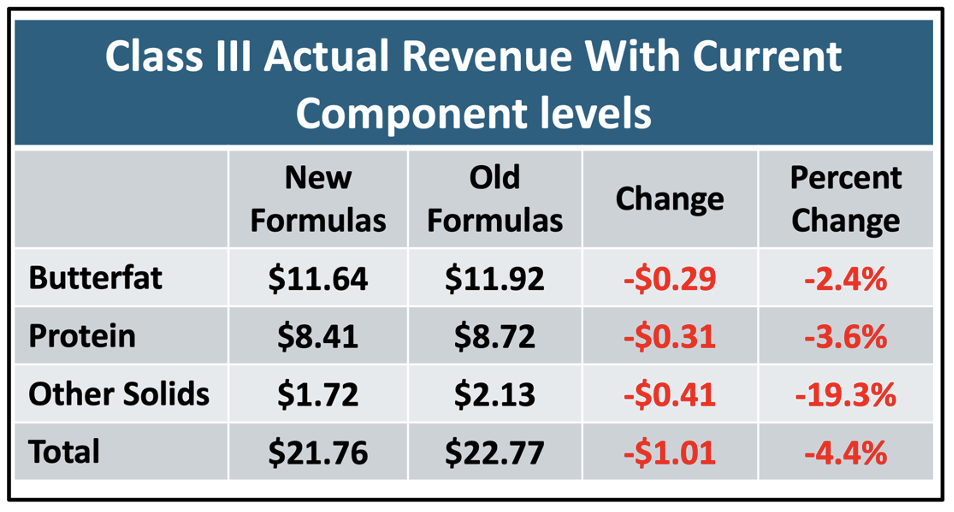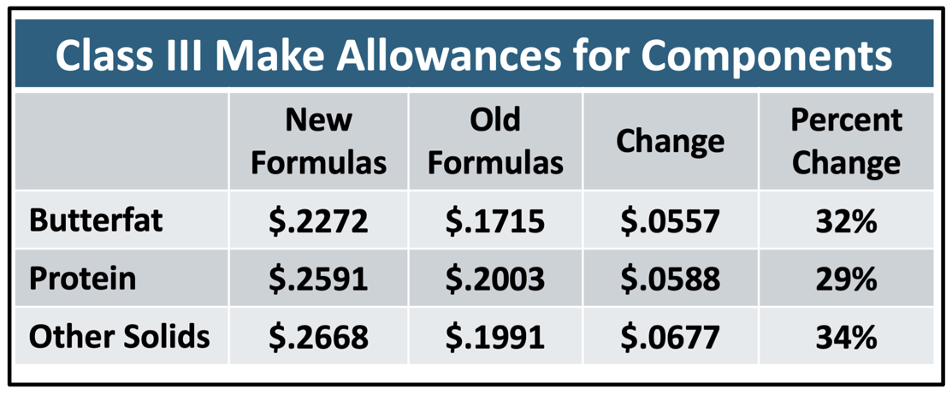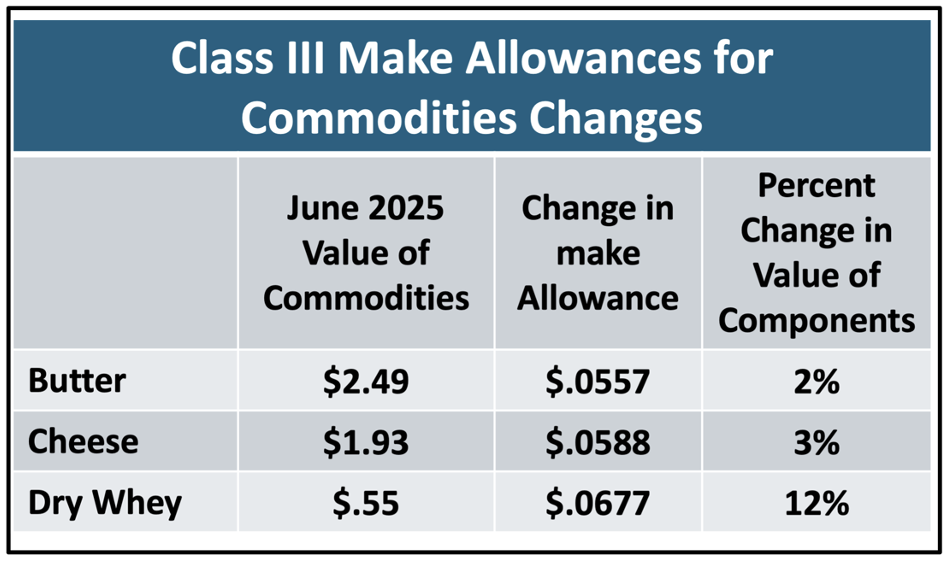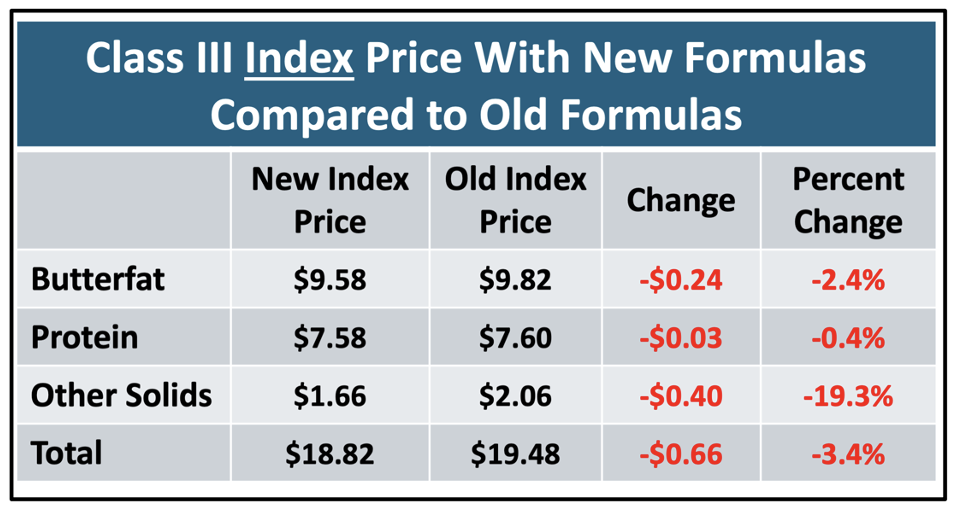June was the first month that some of the new USDA pricing formulas for producer milk were implemented. The new formulas for Class III milk paid producers $1.01 less per cwt. than the prior formulas paid.
The calculations used in the tables below are based on the actual current component levels and the June 2025 commodity prices used to calculate component prices. See this earlier post for details on the analysis of the new USDA formulas.
Table I below quantifies the changes in revenue between the prior and new USDA formulas. In both cases, Class III milk is valued based on 4.25% butterfat, 3.32% protein, and 5.9% other solids, which is the current actual levels. While there are many changes in the formulas, the most significant changes are in the make allowances.

The financial changes in “make allowances” are shown in Table II. As the make allowances increase, the value of milk components for producers goes down. The increases in make allowances range from 29% to 34%. Those funds which are transferred to processors covers their inflation expenses. See this prior post. However, that same amount reduces producer revenue which now must deal with inflation and reduced revenue.

The changes in current commodity values of butter, cheese, and dry whey are shown in Table III. The change in the price of Dry Whey is much larger than butter or cheese values. Therefore, the impact on the value of other solids is significantly more impactful increasing 12% compared to 2% and 3% for butter and cheese. This drastic change is also apparent in Table I where the value of Other Solids has dropped by 19.3% with the new formulas. This has a major impact as dry whey is primarily an export item, and China is the largest buyer. Sales to China of dry whey are already decreasing with the tariff negotiations which are underway.

The changes in the index prices published monthly by the Agricultural Marketing Service showed a 3.4% decrease compared to the prior formulas (Table IV).
The purpose of an index price is to keep all things consistent except of one item (in this case, the price of commodities). The price of butter and cheese increased in June by 5%. But the Class III index price of $18.82 using the new formulas has increased by just 1%. If the prior formula had been used, the index price would be $19.48 the increase would be 5%, consistent with the increases in butter and cheese. The changes in the calculation of the new formulas make the prior and new index number incompatible.

SUMMARY
The loss of revenue for dairy producers should not be a surprise. It has been covered in many articles including the one mentioned above. This is typical of other changes in the USDA formulas. Processors get more money to cover increasing costs. But producers are always expected to cover lower revenue and inflation. Producer improvements include larger herds, more milk per cow, higher component levels, better feed, better breading, automation, improved statistics to better manage, better medical care, etc.




